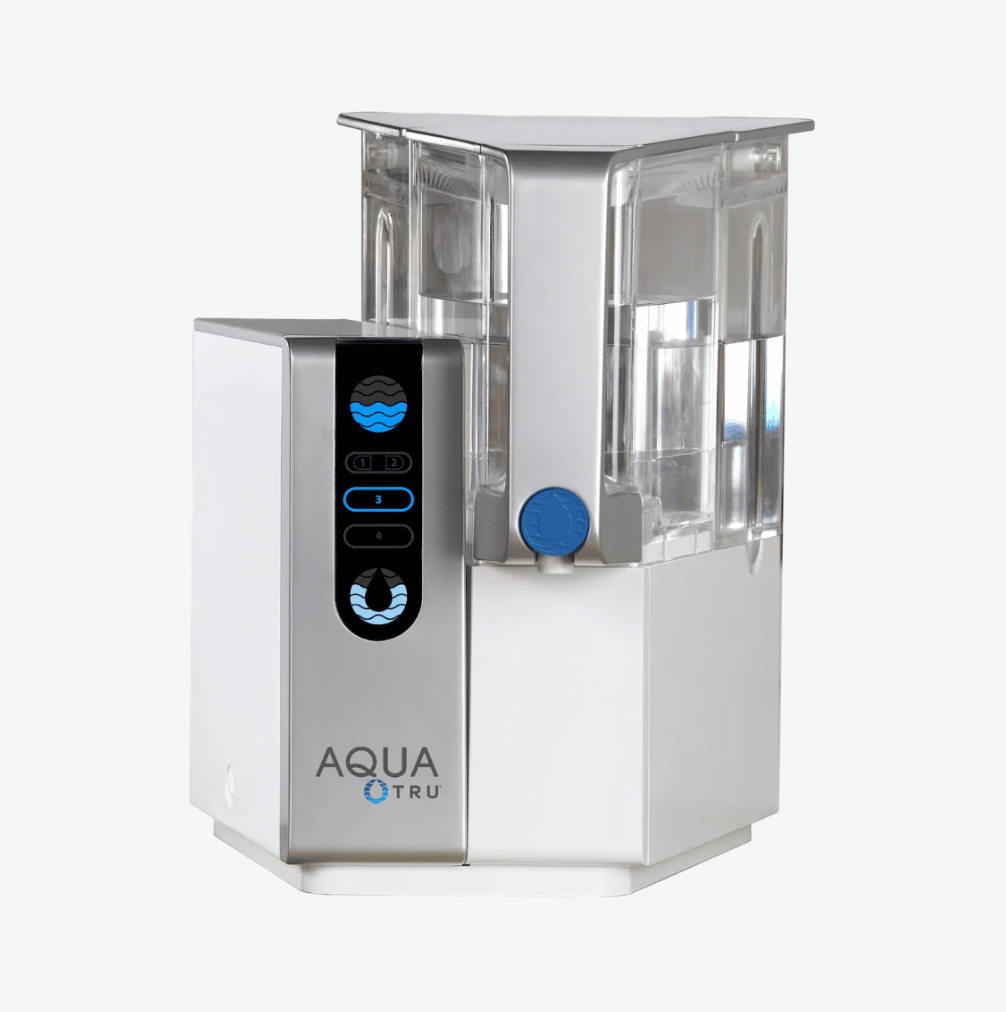Reverse osmosis has proven to be one of the most effective methods of removing PFAS from water. The membrane of an RO system essentially acts as a screen for the water to pass through, while the PFAS and Forever Chemicals gets trapped and flushed out of the system as “waste water”.
How Much PFAS Does Reverse Osmosis Remove?
Generally, Reverse osmosis removes 90 – 99% of PFAS in water. The exact percentage of PFAS a reverse osmosis system can remove depends on the brand/model and number of filtration stages/processes they used.
One of the surest ways to accurately verify the efficiency of an RO System against PFAS is to buy and test the system. But generally speaking, the reverse osmosis process removes 90 – 99% PFAS.
Top 3 Reverse Osmosis Systems for PFAS
Here are the top 3 reverse osmosis systems to remove PFAS from drinking water:
- AquaTRU Reverse Osmosis System: AquaTRU uses a 4-stage reverse osmosis filtration process to remove 97.5% of PFAS from water. It has long-lasting filters that only needs to be changed after 600 gallons of filtered water. —> Get AquaTRU <—
- Aquasana Claryum: It uses 3-stages of reverse osmosis filtration to remove 96% of PFAS in water. Aquasana Claryum is one of the cheapest RO Systems for PFAS. —> Get Aquasana Claryum <—
- Waterdrop G3P800: It uses 9-stages of reverse osmosis filtration to remove 95 – 96% of PFAS in water. Waterdrop G3P800 is one of the most expensive RO Systems for PFAS. —> Get Waterdrop G3P800 <—
You can also refer to our guide on the best pfas water filters for more water filtration options to remove pfas.

How PFAS Gets into Water
PFAS refers to perfluoroalkyl and polyfluoroalkyl substances. This classification is used to describe a large group of different man-made chemicals that are harmful to both humans and the environment. PFAS are the result of certain chemical and industrial processes used in the manufacturing industry, although these processes have since been abolished due to environmental and health concerns.
PFAS leeches into the ground and soil, and find its way into underground wells and aquifers. Because of this, PFAS is most commonly found in underground water sources. They’re so common that you can easily find water testing kits online or in your local pool shop that have a specific test just for different PFAS chemicals in the water.
In large doses, these chemicals can cause negative health effects like increased cholesterol levels, hormone disruption, increased risk for thyroid disease, and many other serious illness.
Testing Drinking Water for PFAS
The most effective way to determine the PFAS level in your water is to get the water tested using a water testing kit like the PFAS water test kit by MyTapScore. This kit is recommended for testing 14 of the most common “forever chemicals” in water.
Here are a few things to note before testing your water for PFAS:
- Test for the different types/classifications of PFAS.
- The concentration of PFAS chemicals in water should be measured in ppt (parts per trillion).
According to a 2022 publication by the Environmental Protection Agency (EPA), the acceptable levels of PFOA and PFOS chemicals in drinking water should not exceed 0.004ppt and 0.02ppt respectively.
| Contaminant | Acceptable Levels |
|---|---|
| PFOA | 0.004 ppt |
| PFOS | 0.02 ppt |
Alternative PFAS Monitoring Method
An alternative to testing your water for PFAS is to refer to the PFAS Interactive Dashboard and Map or the Drinking Water Watch websites. These websites monitor the water quality across united states, which can be helpful to help you understand what is in your water.
However, while these are very useful tools, we still recommend getting a testing kit or sending your water sample to an approved testing lab.